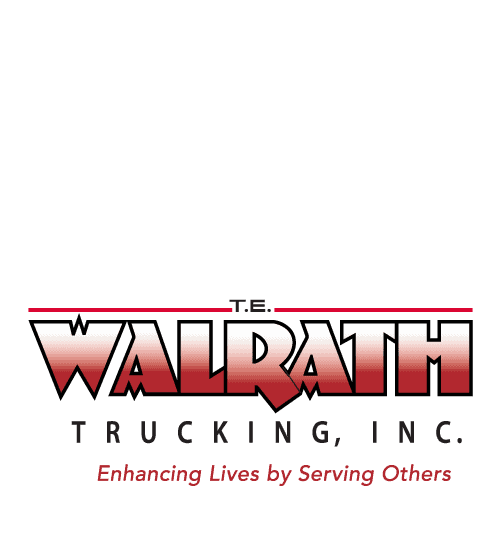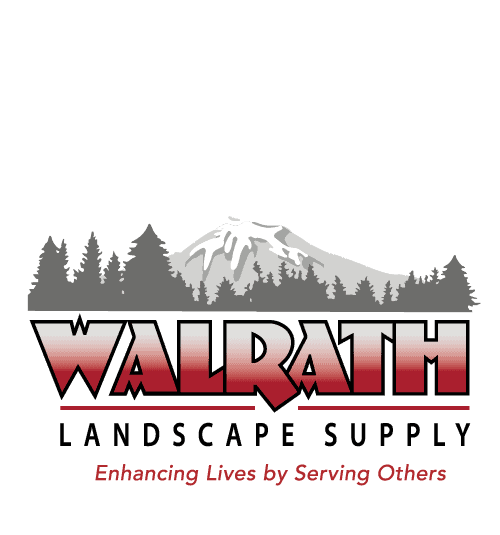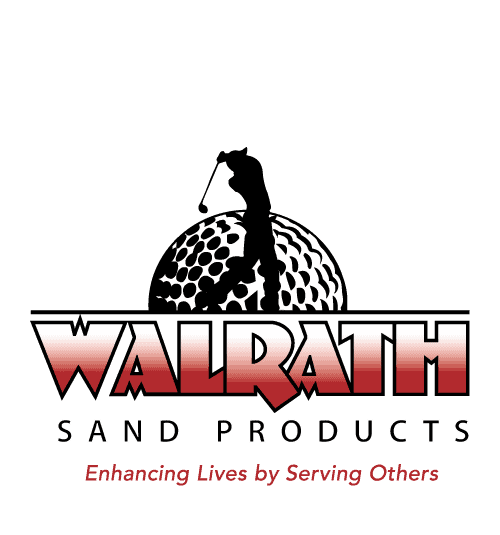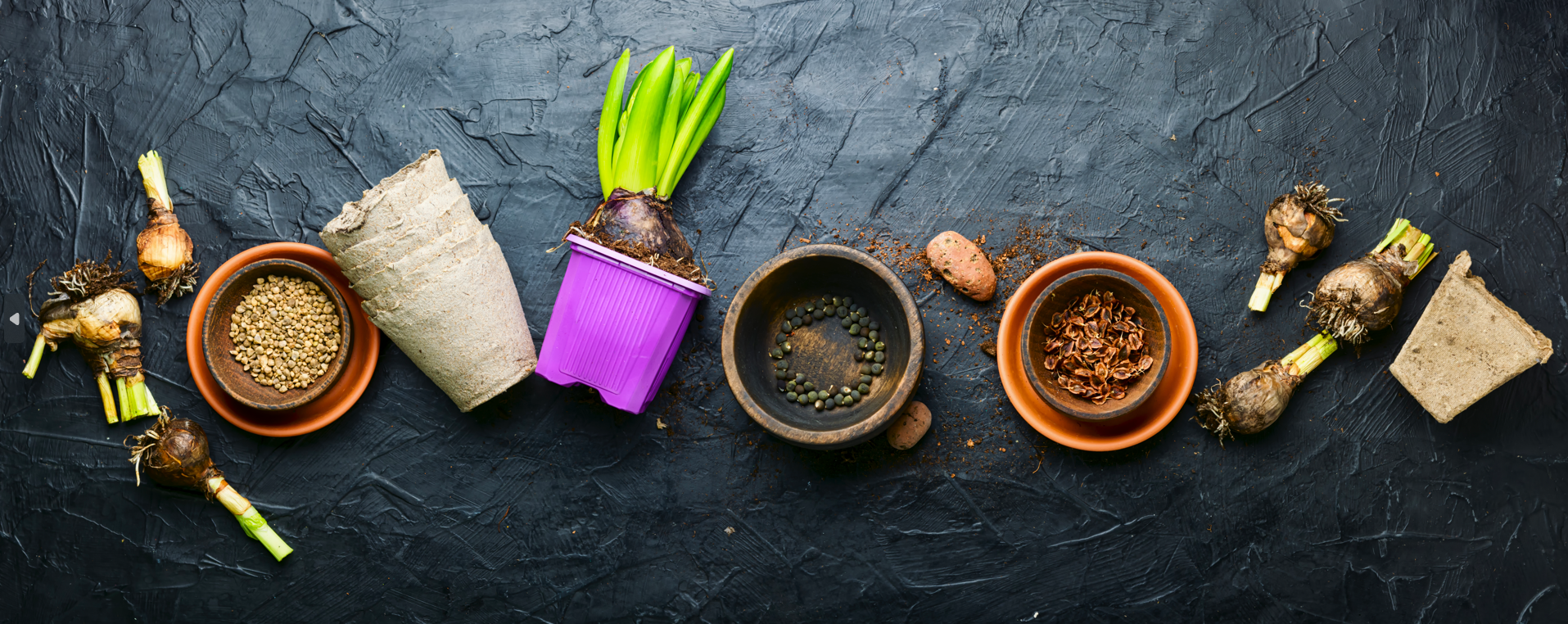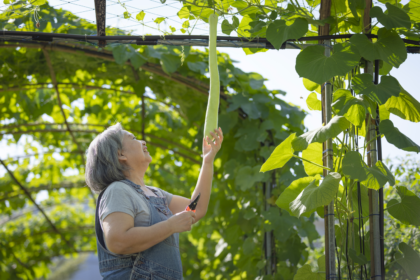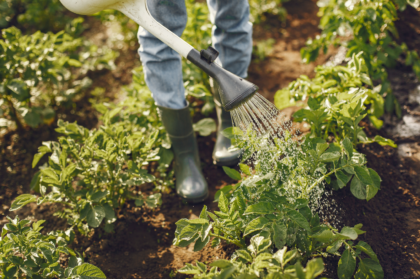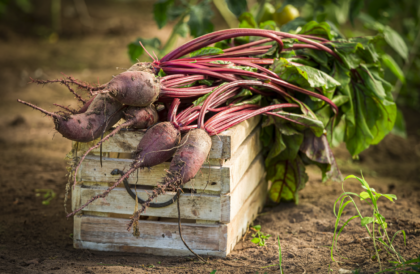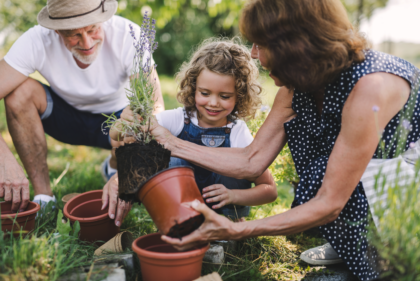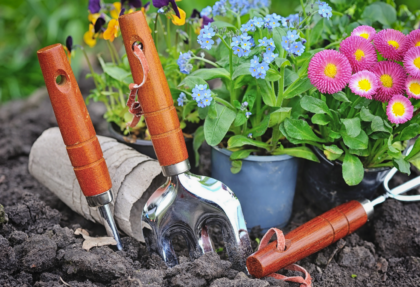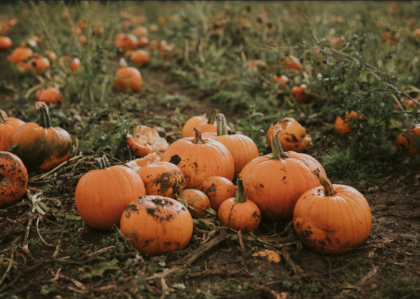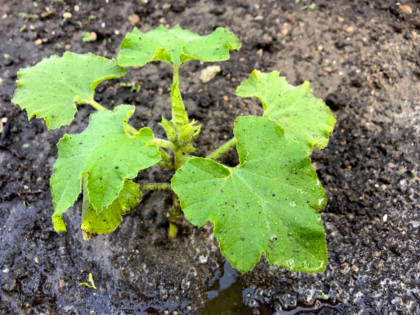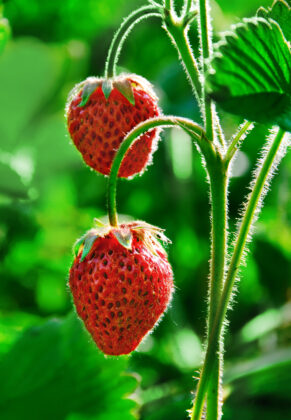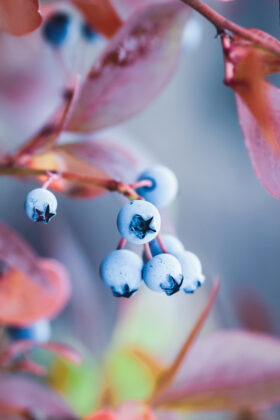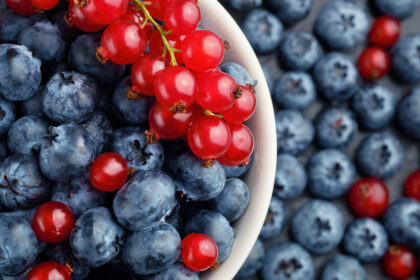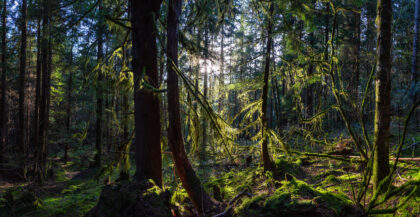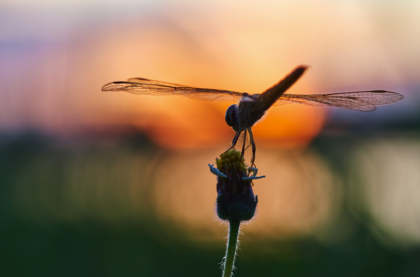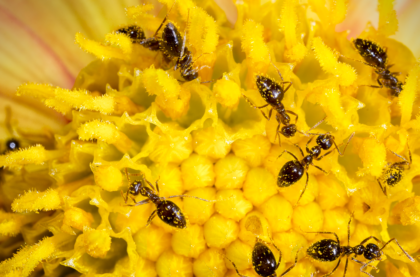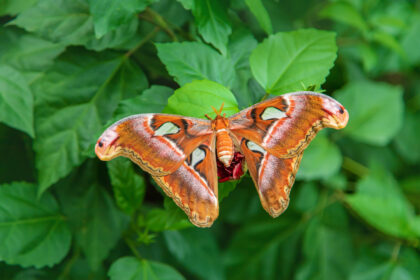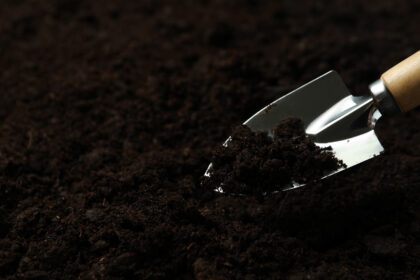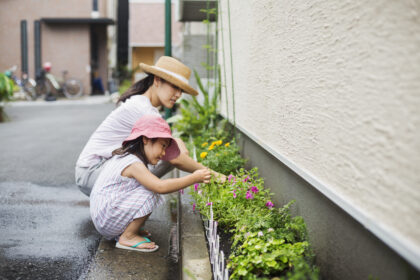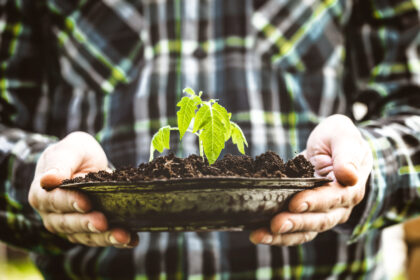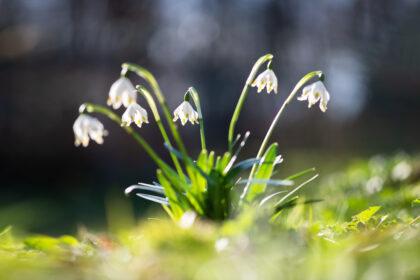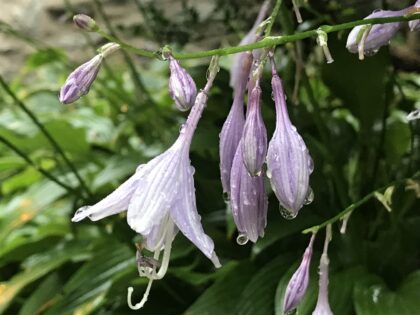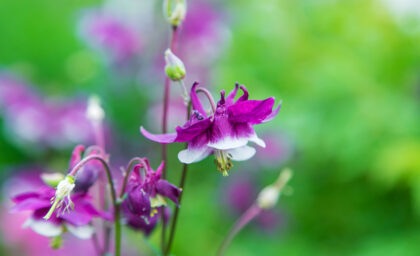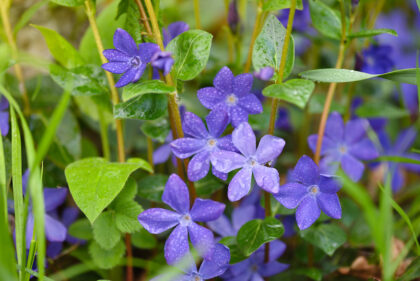-
Main Office (253) 531-7499
Tacoma Landscape Supply (253) 472-1252
Gig Harbor Landscape Supply (253) 858-8184
NE Tacoma Landscape Supply (253) 572-3009
Blog
Useful Garden Tools – 6 Tools You Cannot Survive Without
Whether you’re looking for a useful garden tool to help you with your garden or a gift for someone who enjoys planting, there is always a useful garden tool to choose from. We know you love your garden and want you to have all the best types of tools available. The types of tools we at Walrath recommend include tools like hula hoes, round-nose shovels, hand trowels, rotavator and pruner shears.
Useful Garden Tools for the Best Garden Experience
Hand Trowels
No matter if you are a novice plant parent or a seasoned veteran, you will find that hand trowels are useful tools for gardening. They are ideal for weeding, transplanting and digging up soil. They’re also useful for measuring the depth of soil, which is a great help when potting plants.
Hand trowels come in different designs, including ones with ergonomic handles that reduce the strain on your hands. In addition, the best trowels are forged from strong materials to ensure long-lasting performance. They also come with features like a depth gauge, which measures how deep the soil is in inches.
Hula Hoe
Besides chopping weeds, a hoe is also useful in cultivating your garden. The hoe is usually used to stir soil. When you stir the soil, you can expose the seeds to sunlight. This will stimulate growth if the temperature and moisture are right.
You can choose from a variety of hoes depending on your specific needs. Some are best suited for small areas while others are better suited for larger spaces. Depending on your needs, you may choose a hoe that has a blade that is sharper or thicker than others. You can also choose a hoe that has a double-edged blade to cut down on your weeding time.
Pruning Shears
Using pruning shears is one of the most effective ways to cut back branches. They are also useful for pruning dead flowers and dead wood on trees and shrubs. There is a lot you can do with this very useful garden tool. Choosing a pair of pruning shears that is best for your needs is important. Depending on the type of pruning you need to do, you will need to choose a pair that has a sturdy handle, a good grip and a sturdy blade.
Some of the best pruning shears are made of titanium coated blades, which reduce friction and corrosion when cutting. They also have ergonomic handles, which make them comfortable to use. These types of shears are best used for cutting thick branches and stems. They are also a good choice for those with weak hands, since they are not as tiring to use.
Round-Nose Shovel
Whether you are just beginning to dig a garden or are a professional, you will find that a round-nose shovel is typically the most useful garden tool in the arsenal. These are heavy-duty tools that are made to handle tough soils and roots. They are also used to scoop up soil and transfer sand.
There are many different kinds of round nose shovels, but they all come in a variety of shapes. Some have a D-shaped handle, which provides more leverage and allows you to work more comfortably. Others are made of wood or a synthetic material. The handle can range in length from 27 to 48 inches.
Tiller or Cultivator
Using a tiller in your garden can be a great way to enrich your soil and its an extremely useful garden tool year round. You can prepare ground for planting by loosening soil, which improves drainage. It also allows you to incorporate soil additives into the ground. This makes the soil easier for your seeds to germinate. It’s important to check the condition of the soil before using a rotavator. Heavy clay soil will clog the blades. It may also need to be watered to soften. You don’t want to till wet or frozen soil.
You may need to till several times to get the soil to the right condition. This can take a few days. You should test the soil in your garden by rolling it into a ball. If the soil is sticky, you may need to add some water to soften it.
Wheelbarrow or Cart
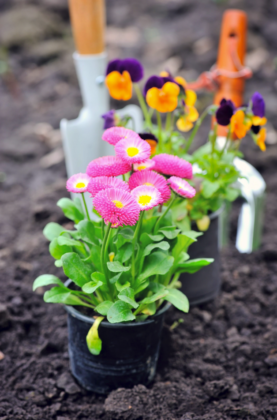
If you need to move a lot of materials around your garden, you’ll need a heavy-duty wheelbarrow. You also may want to look for one that has a folding dolly shelf. This way, you can reduce the number of trips you make.
Choosing the best wheelbarrow for your needs will depend on the size of your garden – remember this is a highly useful garden tool, so you want to get a good one. In general, you should select a model with a load capacity of around 100 to 200 pounds.
Getting a Garden Ready for Spring: 5 Tips!
Getting a garden ready for spring means dividing perennials, planting half hardy annuals, and removing weeds. It also means getting the soil ready and getting a head start on your garden. With Walrath soil and soil mixes, mulches, sand and gravel, your garden will be better than ever. Don’t forget to get all your other landscape supply at our Gig Harbor, Tacoma and Northeast Tacoma locations!
Read on for a list of tips to get prepared for the growing season once more
Rid Your Beds of Weeds
Getting your garden ready for spring starts with removing weeds. There are several ways to do this. Some people choose to take a more hands-on approach, while others are happy to hire an expert. Whatever method you choose, make sure you wear protective clothing and non-slip footwear. You may want to consider a soaker hose to cover the area you are treating.
Aside from weeds, you will also need to remove other debris. For example, a broken plant or piece of bark can be chipped off to prevent new weeds from sprouting. Another solution is to add mulch to get ready for spring. This will suppress weeds while providing essential nutrients to your plants. It will also decompose and break down over time.
You can also use a weed-proof membrane before you lay slate or gravel. These may seem like small changes, but they can keep weeds from popping up.
Prepare Your Soil or Bring in New Soil
Getting the soil in your garden ready for spring is a must if you want to have a productive year. Fortunately, there are many steps you can take to ensure your garden has the best possible start. Besides adding fertilizer, removing weeds and pruning, you may also need to add soil amendments such as compost or mulch.
A good soil test can help you determine what you are missing in your garden. The test can reveal how well your soil is able to hold moisture, as well as its mineral and nutrient content.
While you are testing your soil, it may also be a good idea to incorporate a cover crop to remove excess water and return organic matter to the soil. If you choose to plant a cover crop, make sure to choose one that is suited for your region.
Divide Perennials
Dividing perennials can revitalize your garden and bring new life to your landscape, getting it ready for spring. The dividing process can be done at any time of the year. During the hot, sunny months of summer, it is best to avoid dividing perennials. This is because they can dry out quickly.
If you want to divide your perennials, you should start by checking the crown of the plant. If the crown is bald or outgrowing its boundaries, the plant is probably in need of division. In addition to checking the crown, you may want to consider staking the plant to keep the stems from falling over.
After dividing, you will need to replant the new divisions. It is best to do this as soon as possible. In order to make sure that your newly divided plants are healthy, you will want to water them thoroughly.
Plant Half-Hardy Annuals
Whether you are looking for flowers for your garden or just want to make your spring garden bright, plant half-hardy annuals. These plants have the ability to bloom through the spring and into autumn. These plants have the ability to tolerate cool temperatures and light frost.
They are easy to grow. The plants can be started indoors four to eight weeks before your last frost date. The plants should then be placed in a light frost-free place. They are then planted in early June.
These annuals can also be grown from seed. The seeds can be planted directly in the ground or in multi-cell trays. These plants are also ideal for hanging baskets and window boxes.
The best time to plant annuals is in the evening. This ensures that the seeds are protected from the sun’s rays.
Get a Head Start
Getting a head start on getting a garden ready for spring is a great way to kick start a new gardening season. While it may seem like a never-ending list of tasks, there are many things you can do to get the ball rolling.
First, take a look at your property and determine the best location for a new garden when its ready for spring. You may want to check out your lawn to see if there are any dead patches. If there are, it’s a good time to rake out the debris and reseed the dead areas.
You may also want to check out your yard’s irrigation system to get ready for spring. If you haven’t inspected it since winter, you may want to check to see if the drip flags are broken to get ready for spring. You can also use this time to get a jump on planting your seeds. If you are planning to plant cool-season vegetables, you’ll want to make sure the ground is warm enough.
A Guide to Growing Pumpkins in the Pacific Northwest
When it comes to growing pumpkins, do you tell yourself every year that you’ll grow a pumpkin patch next year? Well, let’s make next year THE year! Read up on growing pumpkins and get started on planning your set up for next year NOW!
Things You Should Know When Growing Pumpkins
There are many different types of pumpkin and each one has its own unique characteristics. Some grow long, sprawling vines while others grow compactly in containers or raised beds. Some are orange while others are white or blue-gray, and some are oddballs. Regardless of which type of pumpkin you grow, there are some things you should know when growing pumpkins.
Growing Pumpkins in a Container
Growing pumpkins in a container requires special care. You should make sure that the soil is rich in compost and has a pH range of six to seven. Pumpkins grow quickly and require a large amount of light. In addition, they prefer direct planting. You should also transplant seedlings as soon as possible from nurseries.
The soil should be rich and well-drained to support the growth of pumpkins. When growing in a container, use a good compost mix and a balanced fertilizer during the first growing season. In addition, you can use a moisture tester to ensure that the soil does not become too dry.
Growing Pumpkins in a Tray
If you are growing pumpkins in a tray, there are a few things you should remember. Pumpkins need lots of water and nutrients to thrive. They grow best in a sunny location with fertile soil. They need regular watering and should be fertilized after a few weeks. Pumpkins need plenty of nitrogen and phosphorous to thrive. In addition, they need to be kept well-watered, especially during the beginning of the growing season when they are still very small.
Pumpkin seeds should be planted about one inch deep in the soil of a seedling tray. Be sure to moisten the soil lightly before planting the seeds. Pumpkin seeds need warmth to germinate.
Pruning Pumpkins
Pruning pumpkins is an important part of growing a healthy pumpkin plant. You should prune your pumpkin vines after they have set a few fruits to promote even growth. When pruning, make sure to use sharp, clean pruning shears like these from Amazon and start at the base of the main stem. Trim off any vine that is overgrown, diseased or damaged.
Hand Pollinating Pumpkins
When growing pumpkins, hand pollination is an important process. This can take place as early as 50 to 55 days after seedlings germinate. During this time, the male flowers, or staminate flowers, begin blooming. Male flowers are different from female flowers in that they do not have an ovary visible at the base.
Pumpkins can be self-pollinated, but some varieties do not set fruit unless they have been hand-pollinated. When hand-pollinating, identify the male and female flowers. Female pumpkin flowers have a swollen bump at the base of the bloom, while male flowers do not. After identifying the male, touch the male flower to the female flower’s center. You can also use a small paintbrush to move pollen from one flower to the next.
Soil Preparation
Before planting pumpkins, it is important to get a great soil. Be sure to stop by for the best soil for your pumpkins. Our premium garden blend will have you growing the biggest pumpkins in the neighborhood.
Harvesting Pumpkins Before Frost
The days are starting to turn a little chillier and it’s time to start harvesting your pumpkins. If you wait until the frost has passed, you may be able to harvest them without damage. If you can’t wait that long, you can simply leave them to ripen on their own. Pumpkins will continue to grow without the leaves, but if there is a heavy frost, you should harvest them as soon as they start to turn orange.
The most common sign that your pumpkin is ready to be harvested is its color. Once the rind is hard and solid orange, the pumpkin is ripe. Harvesting pumpkins before the frost is important because frost will cause the pumpkin vine to stop growing. If the frost is heavy, you must harvest the pumpkins before they are damaged by the harsh elements.
100% Washington State Berries – A Berry Good Guide!
You can find delicious native berries all over Washington state. Use our Washington state berry guide to learn about the common types, harvesting guidelines and preparation. Remember to always keep your berries fresh and be careful when eating unknown berries. This guide also includes information about the people who popularized berry farming in Washington state.
Identifying Washington State Berries
When berry-picking in Washington state, it is important to know how to identify the berries you find. To avoid picking the wrong type, you should always carry a reference book or invite a friend who is an experienced berry-hunter. It is also a good idea to avoid picking berries in areas where plants have been sprayed with chemicals. You never know when a fine-looking berry will turn toxic. A great guide is the app Garden Answers. With this app, you can better identify plants in your surroundings.
Wild blackberries are a common Washington state berries throughout the state but be careful not to pick them without being sure they are indeed blackberries. There are other kinds of berries that look like blackberries, so you need to pay attention to which ones you can eat. Huckleberries are easily identifiable berry in Washington state.
Huckleberries are Washington state berries that grow in low-lying areas, as well as in high-altitude regions. Huckleberries are red or dark purple and round with a small black spot on their bottom. Huckleberries grow from bushes with tiny green leaves, often found in old growth logs. Huckleberries are a favorite of humans and animals alike!
There are so many Washington state berries! Get out there and discover new species today!
Growing Berries
The state of Washington is home to a wide variety of delicious native berries. Here’s a guide to the most common varieties, how to harvest them and how to prepare them.
Some of the most popular berries in Washington state are strawberries, blueberries, blackberries and raspberries. Many larger farms grow more than one variety. They tend to plant several varieties of berries in adjacent rows. Some of these varieties are also grown commercially. Blackberries, for example, are native to the state and can be found growing wild in most green areas.
Blueberries require a slightly acidic soil with high organic matter. If your soil is too alkaline, you can adjust the pH to a more acidic level using elemental sulfur or an acidifying fertilizer. You can also add high-quality compost to the soil to improve its aeration and retain moisture. As a general rule, blueberries need six to eight hours of direct sunlight each day. For the best yield, plant several varieties.
Japanese Immigrants Brought the Berry Industry to Fruition
Sometime in the 1930’s, Japanese immigrants began cultivating Washington state berries. Some of them planted berries along with other crops, while others grew them on their own. One such family, the Mukai family, set up shop in Vashon Island and produced berries for more than thirty years before closing the farm in 1968. They sold their produce at the Pike Place Market and terminal markets. By the 1930’s, more than 500 Japanese families had farms in Washington state, with over 13,000 acres of land.
In addition, there was an abundance of Japanese vendors in Pike Place Market. One of the oldest Japanese farms, the Tsugawa Brothers Nursery is still in operation, producing countless Washington state berries. The Japanese immigrant community was the backbone of the berry farming industry on the West Coast and Japanese farmers made great strides in developing the industry.
When you are ready to get started on your own Washington state berries, be sure to contact us for your soil and mulch needs!
The Insects of Washington State
Have you ever been in your garden and wondered “what is that insect?” or just wanted to know more about common insects you see often while tending your beds? When you garden in Washington State, you’ll surely find your share of interesting insects and we have compiled a list of common insects as well as a few interesting finds.
A Few Interesting Specimens: Washington Insects
Green Darner Dragonfly
The Green Darner dragonfly is one of the most common Washington insects. These dragonflies are excellent aerial hunters with incredible eyesight and powerful jaws. They hunt in large numbers, catching and consuming flying insects. Their unique basket-like legs and powerful jaws enable them to swoop down and scoop up their prey.
The Common Green Darner dragonfly measures approximately six to eight centimeters (2.8 to 3.4 inches) in length. Its wingspan is nine to eleven centimeters. The abdomen is green with a blue shading. The immature green darner has a pale green abdomen. The males have a distinctive dark line down the middle of their abdomen.
The Common Green Darner Dragonfly is the state insect for Washington State.
Paper Wasp
Paper Wasps are invasive and are very common in the great kingdom of Washington insects. Originally from Europe, they have recently been introduced in the United States and are common in some parts of the state. These insects are especially attracted to human dwellings. Beekeepers can often find paper wasp nests under handholds or yard equipment.
These insects live in colonies and begin to form nests when the female leaves her hibernation site. A typical nest consists of 20 to 75 adults. The original female builds the nest and tends to the larvae, but other females often join her and help care for the young. As the young emerge, they become workers and forage for food. Eventually, only the queen will remain in the nest, becoming the new queen.
Carpenter Ant
The Carpenter ant is one of the most common ants when it comes to Washington insects. Its main nesting sites are standing trees, stumps, logs and the forest floor. Often, worker ants will move into the main nest as a satellite colony. Minor workers mostly collect food and expand the nest. Satellite colonies may also contain eggs, pupae and winged.
The Carpenter ant is variably 3.4 to 14 millimeters long and can form colonies of a hundred thousand workers. Each worker has specific duties and the winged male is the first to emerge. When the conditions are right, he releases a pheromone that attracts the female. This is often the first sign that a nest is present. It can also cause a rustling sound.
Atlas Moth
The Atlas moth is a mysterious insect that has, until very recently, never before been found in the United States. It was reported in Bellevue, Washington, on July 27 by a University of Washington professor, Patrick Tobin. This new species has been confirmed by the USDA’s Animal and Plant Health Investigation Service and Washington state officials have asked the public to report any sightings. While this insect does not pose a threat to public health, it is important to document any sightings and report them to the Washington State Department of Agriculture (WSDA) and the state plant regulatory agency, called the Plant Services Program.
An atlas moth is a large, orange moth with a wingspan up to 10 inches. It is believed to feed on cherry and apple trees. It is native to tropical rainforests in Southeast Asia.
Water Bug
Giant water bugs are native Washington insects. These bugs lay hundreds of eggs each on vegetation or on their male partners’ backs and the eggs hatch in one-two weeks. The resulting nymphs, or miniature versions of adult water bugs, go through five stages of development. These nymphs will grow to adulthood in about two months. Afterward, adults overwinter in the mud at the bottom of pools and streams.
Water bugs are considered an indicator of healthy stream ecosystems. These aquatic insects are sensitive to changes in water flow and quality.
Stop on in to discuss more about the interesting Washington insects and how they fit in to your next gardening adventure or landscaping project.
What Is Topsoil?: The 5 Elements of Soil
It is all around us, but some people never stop to think: What is topsoil made of? Soil is a dynamic natural resource that can be enhanced and optimized. Soil is a rich material, containing minerals, water and gases that react to create different properties. This enables plants to grow. It is also the foundation for our agricultural system. The various components in soil affect plant growth, microbial communities, and chemical decomposition.
Soil contains particles that were formed from the breakdown of organic materials. A good topsoil will have the perfect balance of compounds to help your gardens flourish.
Minerals in Topsoil
Topsoil minerals play an important role in plant life. They are necessary for photosynthesis and are absorbed by roots to maintain healthy plant growth. Magnesium and nitrate are particularly important for plants because they are necessary for chlorophyll production. Without these, plant growth is stunted.
The second most common group of soil minerals is the feldspar group. These minerals make up approximately 15-35% of soil and make up a substantial portion of granitic and metamorphic rocks. They have a general formula of Al2O3 and Si4O8 and are a major component of soil. Other feldspar minerals include Ba, Zn, Rb, Sr, Fe2+ and many others.
Organic Matter in Topsoil
The lifeblood of fertile soil is organic matter and it is largely comprised of organisms and decayed plants and plant roots. These elements are paired along with water, air and microorganisms. The natural decomposition of these nutrient-rich substances releases plant nutrients that plants break down as food to grow. The amount of organic matter in soil varies depending on its type, moisture capacity and microbial community. By incorporating organic matter, soil can have an optimized richness and structure.
Air in Topsoil
The air in soil is dynamic, depending on factors such as water content, soil organism activity and variable temperature. Soil is made up of three basic elements: oxygen, nitrogen and carbon dioxide. Soil air cannot mix with air above the soil, as it is not exactly the same; it has a much higher moisture content. Under ideal conditions, the relative humidity in soil can approach 100%.
Topsoil air is present in the pore-space of soil and assists the growth of aerobic organisms. Soil air is a combination of carbon dioxide and oxygen and is part of the soil’s aeration. Excess moisture in soil can reduce soil aeration, so it is good to learn the right balance.
Water in Topsoil
The basic components of soil are minerals, organic matter, water and air. Soils typically contain 45% mineral content, 5% organic matter and 20-30% water. However, the composition of soils can change day-to-day depending on water availability, cultivation practices and soil type. If you are maintaining your garden well, you will get to know your soil quickly. Knowing your soil’s wants and needs will optimize your garden’s abundance.
Rock Particles in Topsoil
Topsoil can contain a mixture of rock and mineral particles. These particles are formed when rocks break into smaller pieces or change into another mineral. The rocks that make up soil undergo geologic weathering and other natural processes. The chemical weathering process changes these rocks into secondary minerals, which are the basic building blocks of soil.
The rock particles in topsoil can be made of silt, which is made up of smaller rock fragments. The rock particles in soil are varying in size, shape and chemical composition. They are invisible to the naked eye but can be viewed under a microscope.

How Our Topsoil Tops the Rest
Our topsoil can be found far and wide. Places like T-Mobile Park, to local parks and the garden around your corner are full of our soil products and we would love to bring it your home as well. Contact us today to get your own piece of our nutrient-rich soil.
Plants that Grow Well in the Shade
It is very interesting how some plants will perform better in certain areas of a landscape. Plants that grow well in the shade may not be able to survive a single day in full sun while other plants can live well in any condition. It is sometimes difficult to know which plants to place where. We at Walrath’s Trucking are here to help educate gardeners on which plants will thrive best in shaded areas.
Different Plants that Grow Well in the Shade
In Washington State, we have the benefit of having many plant species that thrive in the shade and in full sun. No matter your landscaping, you can fill every inch with something green, growing and beautiful. Here is a list of a few plants that grow well in the shade.
Rhododendrons
This flowering bush is the state flower of Washington. It can grow in just about any landscape and provides everything other plants and animals need to thrive. Squirrels and birds love to eat the immature blooms, bees and other pollinators love the endless flowers that explode in bunches from every direction and the bushes can grow to towering heights, providing much needed shade for outdoor creatures.
Hostas
Hostas can be a pretty coveted line of flowers. They can last generations and are passed down from gardener to gardener. These plants are very interesting when they first begin to erupt from the ground. Instead of a little sprout, they look sort of like pointy cones peaking out of the soil. It looks almost as if they grow leaf-first out of a spiral. There’s only one way to see the magic for what it is and that is by growing them in your garden of plants that grow well in the shade.
Bleeding Hearts
These interesting flowers have always been a favorite of gardens in the Pacific Northwest region. These short shrubs grow long stems of flowers with miniature, delicate heart-shaped blooms dangling from thin secondary stems like little jewels. Some of the blooms are light pink and others are a bright, hot pink. Most all have a light pink or white center and sometimes have a splash of purple.
Columbine
Columbine is very popular when it comes to plants that grow well in the shade. The beautiful, full and structured blooms sit atop a long, thin stem. The buds look like stars blooming in the spring. These flowers come in many varieties and colors and you cannot go wrong with where you place them.
Snowbells
These are pretty, little bulbs that pop up during or shortly after the final snow. They are straight out of a fairy garden.
Salal
Salal is a very abundant plant in the Pacific Northwest. You can hardly go anywhere without seeing these short shrubs with trails of white flowers and subsequent blue berries that bear, birds and other wildlife thrive on. You can fill in a great amount of area with these shrubs. The plant will fill in any area with ease as the years mature it.
Helleborus
These are a very hearty flower that continues to bloom year after year. The plants will spread if you give them room to grow and they come in many shades of purple, pink, yellow, white and fully green like the stem. These plants are very short and will not take up much room amongst other plants that grow well in the shade.
Bugloss
Bugloss is a wide, medium-height shrubby plant that grows dainty power-blue flowers atop stems that reach up beyond the foliage. The leaves are artful with a lighter outer edge and darker center area. These are dense plants with lots of growth expected each year.
Preparing Your Garden Beds for Fall
Walrath Explains How to Prepare Garden Beds for Fall
Preparing your garden beds for fall can sometimes be a foreign concept. The Great Pacific Northwest is full of garden enthusiasts who grow bountiful gardens each year. All spring and summer, you will find bountiful gardens of plush blooms and overflowing produce crops. These gardens show up even on the rooftops and side streets of large cities in this area full of amateur and professional growers.
For most of the gardeners in the PNW, it all begins in early Spring. What many people do not know is that you can do a lot of the work in the fall to enjoy even more benefits in the springtime.
Why Prep Your Garden Beds in the Fall?
Each spring, countless gardeners begin the task of cleaning up beds, removing old plants, roots and debris. What most gardeners do not know is that they can prep their garden beds in the fall.
Not only does fall prep help to distribute the workload of garden maintenance, but it can also provide a healthier biome for your soil. The healthier soil leads to healthier plants and better
harvests. If you soil has time to develop and grow its micro-environment, it has potential to be even more nutritious for your plants. You want to feed your plants with the most nutritious sources so that it can feed you nutritiously in return.
Beginning Your Fall Garden Prep:
Soil
No matter if you are growing flowers or produce, the same general rules and applications apply. If you are building beds to use in the new year, you will want to start with soil selection. After you have your beds built, you’ll need to fill them! Check out our selection of soils to choose which one to use in your garden beds. You can’t go wrong no matter which one you go with.
If you already have beds that have worked through the seasons, you’ll want to start by getting out all the old roots, old plants and other debris from the year. If you haven’t already harvested the last of the fruits or vegetables from your plants, now is the time! Enjoy the bounties of your labor with one final harvest.
Amending the Soil
Once you have a nice, clean soil base to work with, you will want to amend the soil. Amending the soil refers to anything you do to improve drainage, composition and fertilizers in the soil to start the process of creating a healthy environment for your flowers and produce for the coming year. It’s important to prep your soil with amendments so that it has the best possible start. Check out our available soil amendments here.
Mulch
Once you have your soil amended and full of nutrients with our special blends, you will want to lock in that feeding with some mulch. We have a great selection of mulches that you can check out here. No matter if you want a fine grade, chunky effect or somewhere in between, you’ll love the look of a garden with the fine detail of some good mulch.
Not only will mulch help your garden look aesthetically amazing, it will also help to lock in the nutrients you just added when you amended the soil. Mulch is like a comfy blanket you lay over your gardens to protect and nurture the micro-environment you have created.
Pro Tip for Fall Gardening
If you love to grow flowers, you can plant some flower bulbs in your soil at this point. If you take the time to plant bulbs in the fall, you can enjoy a sea of tulips, daffodils, crocus and more by the time the spring comes back around.
7 Types of Plants to Attract Pollinators
Attract the best pollinators! There’s a new trend on the rise – collecting beautiful indoor and outdoor plants. Below is a list of 7 types of plants to attract pollinators in the Pacific Northwest, but first we need to learn a little about pollinators.
Pollinators come in several varieties. Some of the more well-known pollinators are bees of all varieties, wasps and butterflies, but there are other creatures that move pollen from flower to flower. Some of these lesser-known pollinators include moths, hummingbirds and bats. We can thank pollinators of all kinds for successful crops, beautiful blooms and the continuance of all life on this planet. They truly are the creators of life and we should do all we can to attract pollinators in our gardens.
Types of Plants to Attract Pollinators
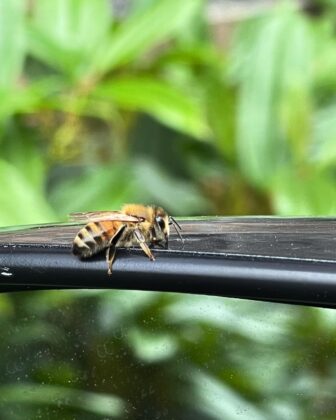
A Western Leafcutter Bee takes a rest on a car window – Photo credit: Shelby Beckwith
Common Sunflowers
They may be called common, but the Common Sunflower is dazzling and attracts pollinators from far and wide. The bright yellow blooms call the birds and the bees over to party on its large center. Start Common Sunflowers from seed in the springtime and enjoy beautiful blooms in no time.
Lupine
Lupine are tall flowers with stacks of periwinkle-purple bell-like blooms. The flowers look as if they are from a wonderland and will turn your yard into your own personal fairy garden. In the Puyallup Valley, near the popular Farm 12 restaurant and event center, there is a large field of lupine with Mount Rainier standing picturesque in the background.
This field is full to bursting with flowers to attract pollinators and also photographers hoping to catch a timeless moment in the lupine with our Lady Rainier.
Wild Roses
If you don’t already have wild roses in your garden, odds are a friend of yours does and can spare a root or two. Wild roses are another plant for your garden that has an essence of whimsy. These plants are hardy and will typically never die off even in the coldest winters. All summer long, you will find butterflies on blooms that mimic a watercolor painting.
Lilacs
Lilacs are an amazing plant option to attract pollinators to your garden. It is a sign of spring when you see the flowers buds forming in clustered bunches on the long, thin branches of the tree. The very fragrant blooms grow in varieties of white, various shades of purple and sometimes slightly light pink. Keep the lilac tree pruned to create a dense canopy and enjoy a full tree of blooms.
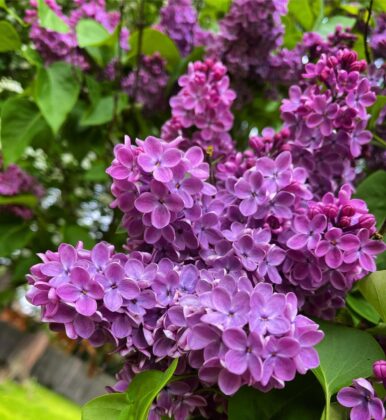
Lilacs grown in the Pacific Northwest – Photo credit: Shelby Beckwith
Spiraea
Spiraea are a fluffy and fragrant puffs of blush pink flowers that bloom around June. This suckering bush will fill in space in your garden over the years so make sure to plant it somewhere with room to grow. Pollinators will be lining up around the corner for their chance at these pretty little poofs.
Showy Milkweed
It’s all in the name with this attractive flower. The Showy Milkweed is a large ball of clustered blooms that form atop a long stem. Hummingbirds love the light pink to light purple and white star-shaped flowers.
The flowers bloom from late spring to early summer. These flowers are crucial to the life of monarch butterflies who are close to extinction. You can plant showy milkweed in your garden to do your part to save these magical winged creatures.
Hawthorne Trees
Although these trees are thorny, they produce a crucial environment for birds, butterflies and bees to live, pollinate and rest. Anyone with a Hawthorne tree will tell you it’s one of the busiest places in the garden and will certainly attract pollinators.
The countless small blooms transform into berries over the summer to further benefit the pollinator population after bloom season. The trees grow at a moderate pace and can be easily maintained by pruning regularly.
8 Plants to Grow on Hillsides
Whether your garden consists of a flower box on your balcony or extends for acres, it feels good to fill in negative space. Beautiful green plants that reach for the sun can add texture and vibrancy to any space. But what about things that grow “out”? Having beautiful plants that can cover a hillside or sloping yard is the perfect way to give that “effortlessly polished” appearance.
However, it’s important to make sure that you pick the right plan. The wrong kind of plants won’t have the root systems to thrive on slopes. They can also make that hillside more prone to erosion. Luckily, there are many different kinds of ground-hugging, beautiful plants that can get the job done.
To help give you some inspiration, here are 8 plants to grow on hillsides:
Types of Plants to Grow on Hillsides
Creeping Phlox
Creeping Phlox features vibrant purple flowers that smell amazing. These low growing plants bloom in the spring, covering your hillside in lovely lavender-colored blooms.
English Ivy
English Ivy gives a classic, rustic chic look to any space it covers. Though slow growing at first, this hearty little plant picks up speed once established. A great option for willing empty space while controlling weeds.
Periwinkle
Signifying faithfulness and trust, periwinkle is a top choice as a ground covering plant. The purplish-blue flowers this little evergreen plant produces are captivating. They also double as weed suppressant due to the density of the blooms!
Dead Nettle
Dead Nettle is another good option for covering large areas. This fast growing plant is perfect to plant in any conditions.
Switchgrass
If you’re looking for something a little taller to give your hillside some dimension, switchgrass is a great option. Growing up to 6 feet tall, this ornamental grass produces red and purple blooms that flower from July to September. Switchgrass is a great option for adding some drama and flare to a landscape.
Russian Sage
This beautiful shrub produces purple flowers that bring color and dimension to any hillside. These little plants grow up to 5 feet tall and 4 feet wide, meaning that just a few can cover a hillside with ease. Russian sage is low-maintenance and tenacious.
Prostrate Rosemary
Not only is this decadently fragrant herb great for sniffs and to add to sourdough loaves, prostrate rosemary is a great plant to add to a landscape. A single plant can cover between 4 and 8 feet of space and reach up to 1 foot tall.
Creeping Juniper
As the name suggests, creeping juniper is exceptionally good at spreading out. This perennial shrub is native to northern North America, Canada and Alaska, meaning that it’s used to the colder temperatures we often see during the winter. They also do well in direct sun, meaning they should have little to no issue in the dead of summer as well. The blooming season for the dark blue cones of the juniper is April and May.
A successful landscape and thriving plants starts with good soil. Explore our products, then come into Walrath Trucking for all your soil and landscaping needs. We’ll help you find the right type of soil to help you achieve your dream garden or landscape.
Come back to our blog monthly to get tips on planting and cultivating your dream garden!
Related reading
Choosing Plants for Sloping Areas – What Plants Grow On Slopes

